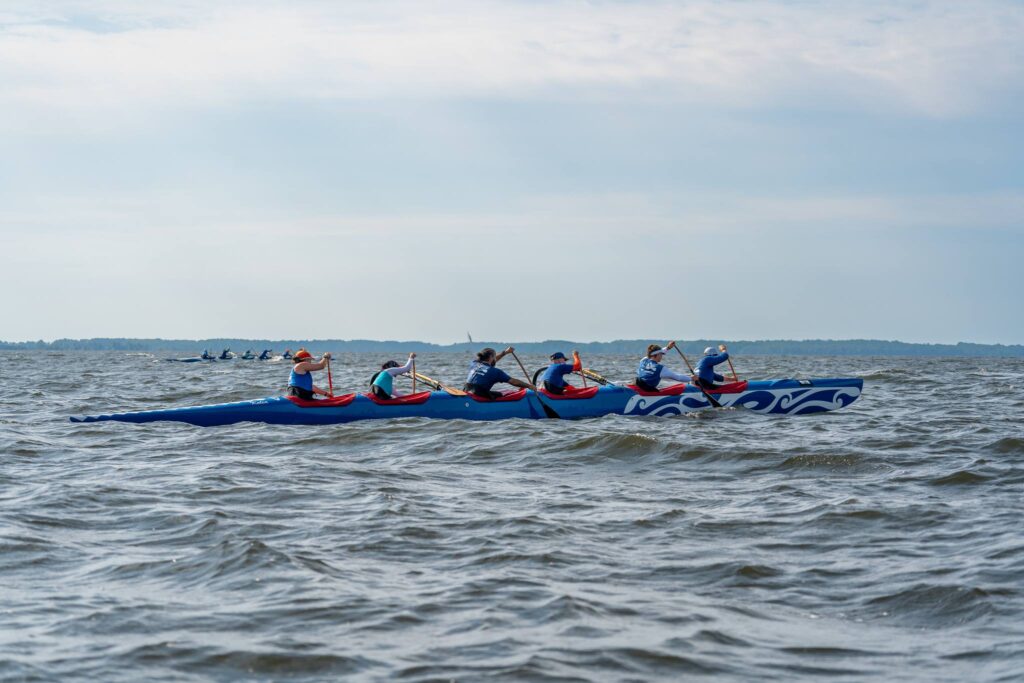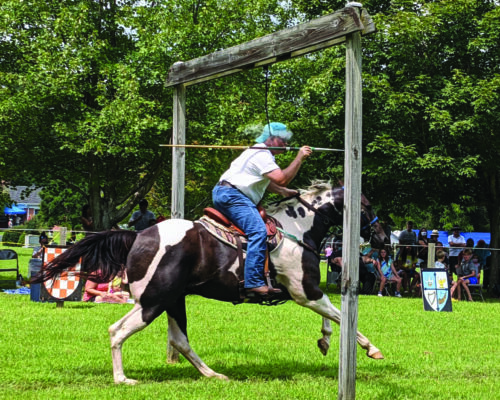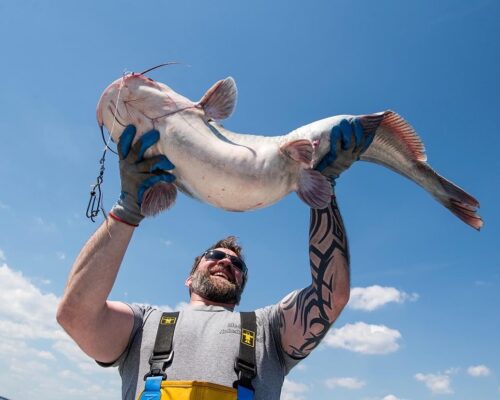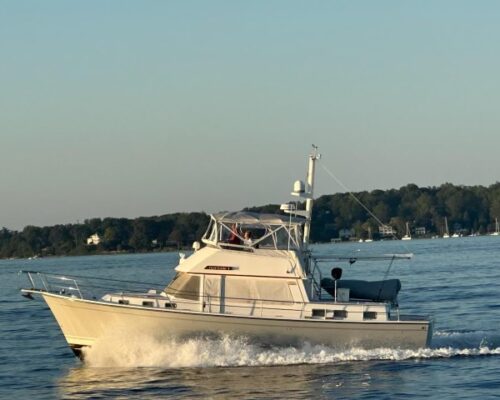On July 20, over 200 paddlers, canoers, and outrigger canoe enthusiasts will take to the shores of Kent Island Yacht Club for the fourth annual Bay Paddle. This year’s event is an endurance race of 35, 10, or 3 miles on Eastern Bay. The paddle, organized by record-setting standup paddleboard athlete Chris Hopkinson, is a celebration of the Chesapeake Bay estuary as well as a call to action to protect the waters that so many of us call home.
In September 2020, Hopkinson became the first person to travel the length of the Chesapeake Bay on a 14-foot paddleboard, paddling from Havre de Grace in the upper Bay to Fisherman’s Inlet in Virginia. Hopkinson’s first Bay Paddle brought awareness to the work of the Oyster Recovery Project (ORP), as he raised $193,000 for their work in planting 20 million oysters in the Bay.
Hopkinson’s marathon paddle wasn’t just a call to action for environmental outreach: he inspired other paddlers from all corners of the Bay to join him in distance paddles the following three years. This July, for the fourth annual event, Hopkinson is bringing an impressive fleet of 6-person outrigger canoes (OC6s) for the races, working with paddlers from the East Coast Outrigger Canoe Association (ECORA). It’s a spectacle you don’t often get to see on the Bay.
The OC6 is a 40-foot-long canoe weighing between 150 and 200 pounds, and is capable of ocean crossings. For the Bay Paddle, 12 OC6s will be taking part in a 35-mile circumambulation of Kent Island. Although the canoes are six-person boats, more than six paddlers will take part in the race. The paddlers will actually swap out mid-race as the canoe, incredibly, never stops.
“During races, they’ll have six people in the canoe paddling while three to four other people are in a chase boat,” Hopkinson says. “To change out paddlers, the powerboat will go ahead of the canoe, and people will jump out of it, then climb in the canoe while paddlers jump out of that. The goal is for the canoe to not stop.”
You can see the dramatic (and fast!) process in this video:
In any one race, paddlers can expect to perform 10-15 changes. There are currently only two other change races in the United States—one in Catalina, California, and the other in Hawaii. By introducing a change race structure to the Bay Paddle, Hopkinson and ECORA are creating a qualifying race that will allow East Coast OC6 paddlers to travel outside the Bay for racing. The Bay, with its unique nature and topography, provides a phenomenal training ground and has the potential to become a premier outrigger race venue, meaning you don’t have to travel all the way to Hawaii to compete (although you might want to, as well).
“A lot of the people who do the paddling have connections to the original culture,” says Hopkinson. “They’ve either lived in Hawaii, or once they get transplanted in other areas, they help grow the outrigger community.”
One of those paddlers is David Schofield, a marine mammal biologist who spent over a decade on the island of Oahu working in marine animal rescue before moving back to Delaware and starting the New Hope Outrigger Canoe Club Team Atlantic. The sister club to a group in Hawaii, New Hope has the Hawaiian spirit running deep in its mission.
“There’s a saying in paddling,” Schofield says. “He wa’a he moku, he moku he wa’a. This means, ‘the island is a canoe, the canoe is an island.’ If we aren’t working together in the canoe, the canoe goes nowhere. We have to come together to preserve the sea, and we can’t do that as individuals.”
Schofield’s New Hope Club has over 50 paddlers who frequently can be seen paddling out toward Cape Henlopen in the Lewes and Rehoboth areas. But it has little to do with racing, he says. “It’s about fellowship: getting together to enjoy creation. When everybody is working together in unison, the canoe has a spiritual aspect to it. You’re blending in with your fellow paddlers in the canoe, and it’s a wonderful thing to behold.”
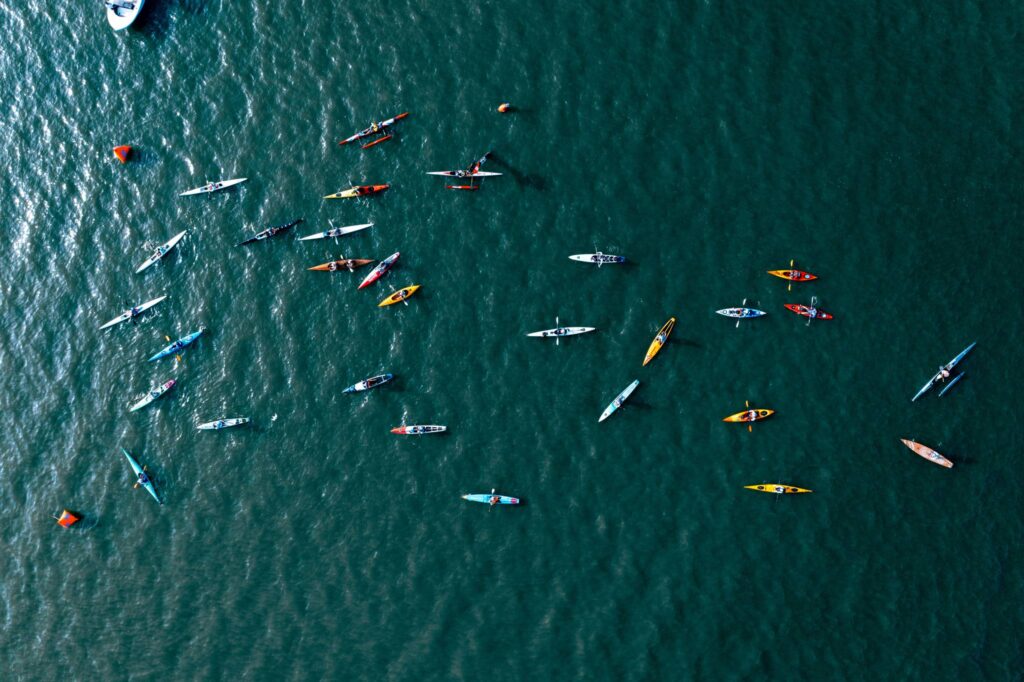
You don’t have to know how to paddle an OC6 to participate in the Bay Paddle. Entries allow for SUPs, kayaks, canoes, and surfskis, working solo and in teams. And if you aren’t up for that, spectating and attending the afterparty (appropriately, this is a luau) is encouraged, as Hopkinson hopes to bring a festival element to the weekend.
“You really have to get out on the Bay to appreciate how important it is,” he says, noting that for so many Chesapeake Bay residents, water access is minimal, and so investment is light. During his Bay Paddle, Hopkinson came into contact with wildlife that call the estuary their home, and he realized a profound sentiment.
“I’m the guest here,” he says. “And as the guest, it’s my responsibility to protect them. And the best way to inspire others to feel that way, too, is to get them on the water, to experience it for themselves. It’s a feeling you can’t get simply from eating crabs.”

